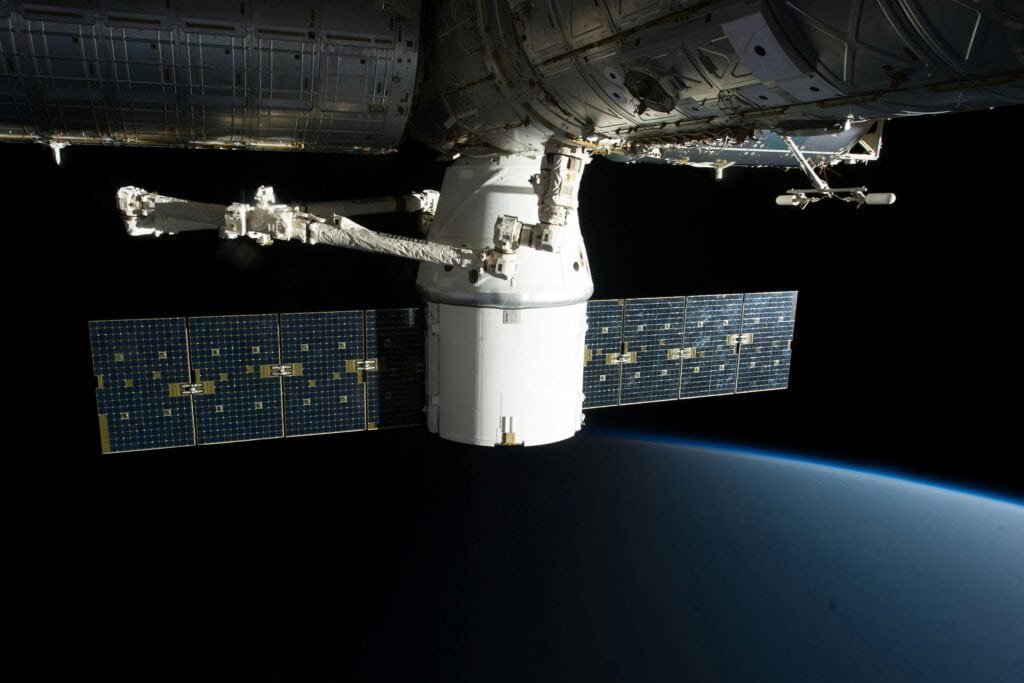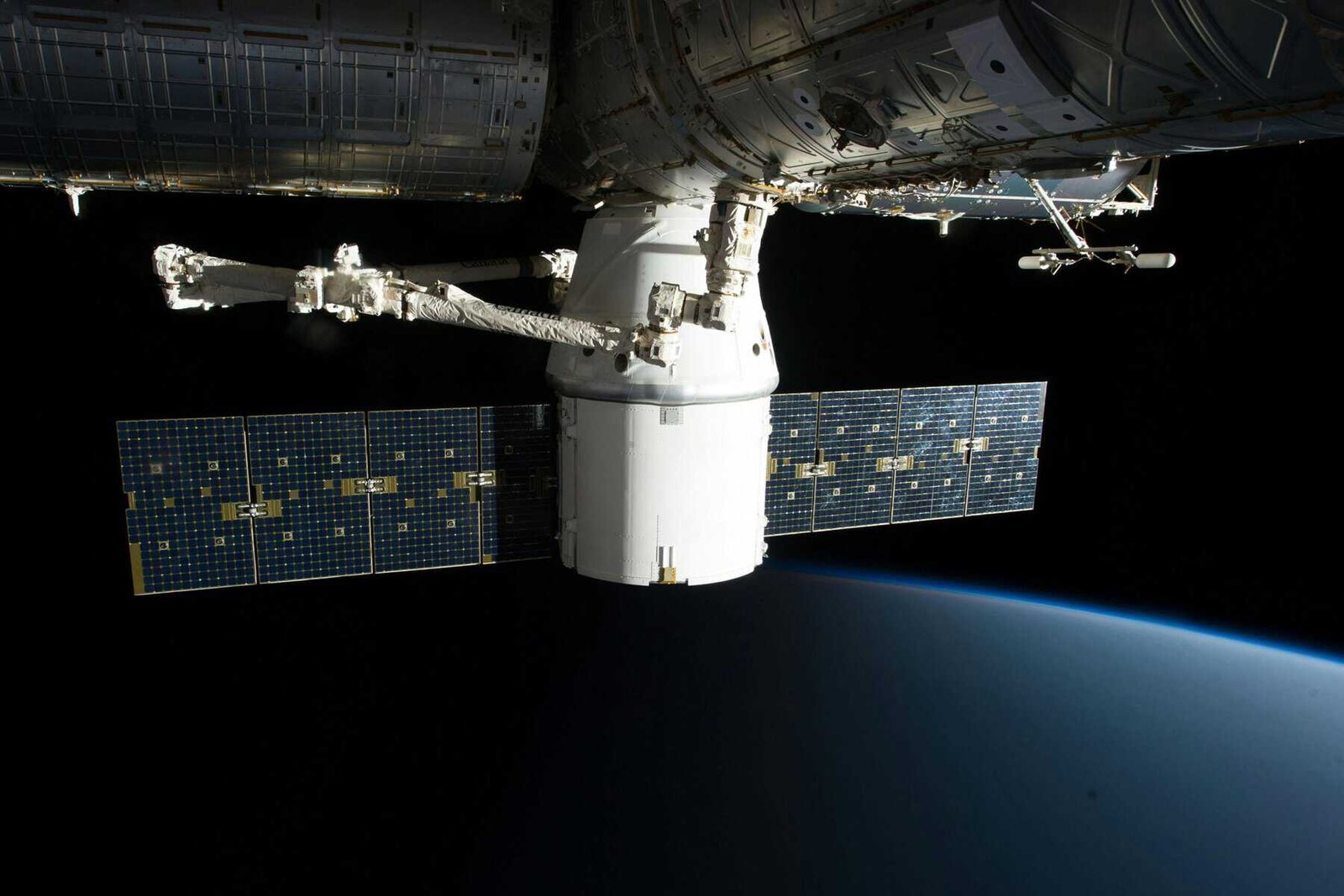The notion of catching solar energy in space and sending it back to Earth is referred to as space-based solar power (SBSP) or space solar power (SSP). This concept involves the use of massive solar arrays in space to gather sunlight and convert it into electrical energy. After being transported to Earth by means of microwave or laser beams, this energy is subsequently transformed back into electricity or utilised for a variety of applications once it arrives on Earth. Here are some of the most important parts of the technology that are necessary for SBSP:

Photovoltaic (PV) cells are the components that make up solar arrays. These cells are responsible for converting sunlight into electrical energy. In order to get the greatest possible amount of energy collection, photovoltaic cells are often constructed out of silicon or other semiconductor materials and placed in large panels. Solar arrays in space are able to be significantly larger than those constructed on Earth since there are no constraints imposed by the atmosphere or the weather.
Space-Based Power Stations:
Space-based power stations are enormous structures that are located in space and are responsible for housing the solar arrays and other components of the SBSP system, respectively. Therefore, in order to maximise the efficiency of energy collection and transmission, these power stations could be positioned in geostationary orbit (GEO) or in alternative orbit configurations.
Transmission via Microwaves or Lasers:
The electrical energy that is produced by the solar arrays is transformed into microwave or laser beams in order to be transmitted to the planet Earth. Due to the fact that it is able to more effectively penetrate the atmosphere of the Earth, microwave transmission is becoming increasingly popular. Laser transmission, on the other hand, has the capacity to be more targeted and has the potential to achieve higher efficiency.
Rectennas:
Rectennas, also known as rectifying antennas, are responsible for receiving microwave or laser beams on Earth and later converting the energy that they receive back into electricity. Rectennas are made up of arrays of antennas and rectifiers, which are responsible for capturing and converting the energy from the microwave or laser into electrical power that can be used.
Energy Storage:
For the purpose of storing the electrical energy that is transferred from space, energy storage systems are utilised during times when the solar arrays are not getting sunlight or when the demand for electricity on Earth is low. The utilisation of energy storage technologies, such as batteries and supercapacitors, is very necessary in order to guarantee a constant supply of electricity.
Launch Vehicles and Space Transportation:
The building and deployment of SBSP systems necessitate the utilisation of space launch vehicles and transportation systems in order to move the solar arrays, power stations, and other components into space. The development of new propulsion technologies and reusable launch vehicles is underway with the goal of lowering the cost of space transportation while simultaneously increasing its efficiency.
Orbital Maintenance and Operations:
In order to maintain and operate SBSP systems in space, high-tech robotics, autonomous systems, and the capabilities of human spaceflight are required. In order to repair and maintain the solar arrays, power stations, and other components over the course of time, these systems are required.
Environmental and safety considerations SBSP systems are required to be developed with environmental and safety considerations given great attention during the design process. For instance, the microwave or laser beams need to be properly managed in order to prevent interference with other radio frequencies and to protect both humans and animals that live on Earth.
In conclusion, the technology that is necessary for the collection of solar energy in space and the transmission of that energy back to Earth is a complicated and multi-faceted system. The utilisation of sophisticated solar arrays, space-based power stations, microwave or laser transmission, rectennas, energy storage, space transportation, and orbital maintenance and operations are all components of this endeavour. In spite of the technical obstacles, SBSP has the potential to supply a source of energy that is both renewable and sustainable, which would meet the ever-increasing energy requirements of the planet.
Without a doubt:
Listed below are some additional factors to take into account and developments that have occurred in relation to the technology that is necessary for harvesting solar energy in space and sending it back to Earth.
Efficiency of Solar Panels:
Ongoing research and development activities are centred on the goal of enhancing the efficiency of solar panels that are utilised in space-based electricity generation systems. In the field of materials science, recent developments, such as the creation of thin-film solar cells and multi-junction solar cells, have been made with the intention of enhancing the efficiency with which sunlight is converted into energy. This will allow solar arrays to produce the maximum amount of power possible.
Manufacturing in Space Innovations in manufacturing processes are currently being investigated with the purpose of creating large-scale solar arrays and other components of space-based solar power systems in space itself. For instance, additive manufacturing, often known as 3D printing, could make it possible to fabricate solar panels and structural components while in orbit by utilising materials recovered from asteroids or lunar regolith. This would reduce the expense and complexity of launching fully constructed systems from Earth.
The existence of space debris constitutes a threat to space-based solar power systems, as impacts with debris might potentially damage or destroy vital components. This danger can be mitigated by the use of orbital debris mitigation. Active debris removal missions and deployable shields are two examples of the technologies that are now being developed to improve the safety and endurance of space-based infrastructure. These technologies are being designed to track and mitigate orbital debris at the same time.
Developments in Wireless Power Transmission:
Research is still being conducted to improve the effectiveness and safety of wireless power transmission systems, which are used to beam energy from space to Earth. Phased array antennas, beamforming techniques, and adaptive control systems are all examples of innovations that are being developed with the intention of improving the precision and reliability of power transmission while simultaneously reducing transmission losses and potential environmental implications.
International Cooperation:
Initiatives for solar power that are based in space frequently include international cooperation involving governments, space agencies, and private sector firms from a number of different nations. It is possible to accelerate progress towards realising the potential of space-based solar power as a global energy solution through the formation of international collaborations. These partnerships make it possible to pool resources, share expertise, and distribute expenses associated with research, development, and deployment initiatives.
Frameworks for Policy and Regulation It is vital to develop comprehensive policy and regulatory frameworks in order to adequately oversee the deployment, operation, and administration of space-based solar power systems. Issues such as spectrum allotment for wireless power transmission, space traffic management, environmental impact assessments, liability and insurance considerations, and international coordination of space activities are some of the topics that are addressed by these frameworks.
Increased public awareness and acceptance It is essential to increase public awareness and acceptance of space-based solar power as a viable and sustainable energy alternative in order to attract support and investment. It is possible to build knowledge and acceptability among stakeholders and the general public by implementing educational outreach campaigns, public engagement forums, and clear communication regarding the benefits, hazards, and ethical implications of space-based solar power.
In conclusion,
the technology that is necessary for capturing solar energy in space and transmitting it back to Earth is continuously evolving. This evolution is driven by advancements in materials science, manufacturing techniques, wireless power transmission, orbital debris mitigation, international collaboration, policy development, and public engagement. Space-based solar power has a significant potential to become a clean, renewable, and abundant source of energy that can meet the expanding energy needs of humanity while simultaneously mitigating the negative effects on the environment. This potential can be realised through continued research and development efforts as well as collaborative initiatives.

